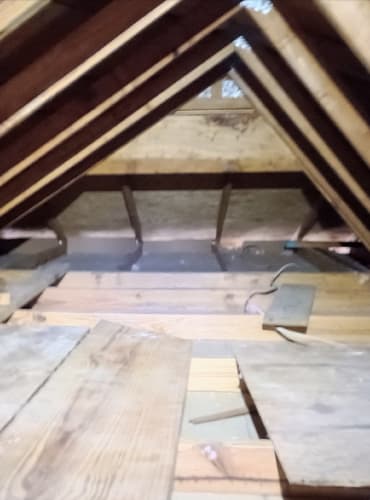Remove Old Insulation

When to remove the old insulation?
Changing the old insulation in a building or structure can be necessary for several reasons, including:
Energy efficiency: Old insulation may have degraded over time, leading to reduced energy efficiency. Upgrading to newer insulation materials with better thermal performance can help prevent heat loss or gain, reducing energy consumption and lowering heating or cooling costs.
Moisture and mold issues: If the existing insulation has been damaged by moisture intrusion or if it does not effectively control moisture, it can lead to the growth of mold or mildew. Changing the insulation can help address these issues and prevent further damage to the building and potential health hazards.
Fire safety: Older insulation materials may not meet current fire safety standards. Upgrading to fire-resistant insulation can enhance the overall safety of the building, providing better protection against fire hazards and potentially reducing insurance premiums.

Noise reduction: Insulation plays a crucial role in reducing sound transmission between rooms or from outside sources. If the existing insulation is ineffective at noise reduction, changing it to a higher-performing material can improve acoustic comfort within the building.
Structural integrity: In some cases, old insulation may have compressed or settled over time, losing its thickness and ability to provide proper support or insulation. Changing the insulation can help restore the original structural integrity of the building and maintain its overall performance.
Health and indoor air quality: Certain types of older insulation materials, such as asbestos or formaldehyde-based products, may pose health risks if they deteriorate or are disturbed. Removing and replacing such insulation with safer, non-toxic alternatives can improve indoor air quality and protect the health of occupants.
Renovations or retrofits: When a building undergoes renovations or retrofits, it may be necessary to change the insulation to accommodate new construction methods, building codes, or design requirements. This ensures that the building envelope is properly insulated and meets the updated standards.

Bad Smell: Mold isn’t the only thing that can cause your attic to smell. Attic insulation can get damp when there is excessive air moisture, causing condensation to drip from different areas. Apart from leading to an unpleasant smell, wet insulation will likely not function correctly and possibly require replacement. In addition to the cost of this, consider the added expense of your energy bills caused by reduced energy efficiency in your home.
If insulation has been wet for a long time, it is likely that an extensive replacement will be required. To avoid recurrence of the issue—prevention being better than the cure—it’s advisable to make sure you have sufficient ventilation going forward.
It’s worth noting that the decision to change the old insulation should be based on a thorough assessment of the specific situation, considering factors such as the condition of the existing insulation, building regulations, energy efficiency goals, budget, and the desired performance improvements. Consulting with professionals in the field, such as insulation contractors or energy auditors, can provide valuable guidance in making the right decisions.
